Water Basics
Water is one of the most essential components of the human body. Water regulates the body’s temperature, cushions and protects vital organs, and aids the digestive system. Water not only composes 75 percent of all muscle tissue and about 10 percent of fatty tissue, it also acts within each cell to transport nutrients and dispel waste. And, because water composes more than half of the human body, it is impossible to sustain life for more than a week without it.
Dehydration
Necessary to the healthy function of all internal organs, water must be consumed to replace the amount lost each day during basic activities. In 2004 the Food and Nutrition Board released new dietary reference intakes for water. It is recommended that women consume 2.7 liters (91 oz) daily and men consume 3.7 liters (125 oz) through various beverages (80%) or in food (20%). Active individuals need even more, particularly if they’re exercising in hot weather. This is especially important during the 24 hours prior to vigorous exercise.
You can meet your body’s water needs over the course of a day through a variety of fluids and foods including juices, soda, smoothies, tea, lemonade, soups, fruits and vegetables. In one hour of exercise the body can lose more than a quart of water, depending on exercise intensity and air temperature. If there is not enough water for the body to cool itself through perspiration, the body enters a state of dehydration.
Here are 5 surprising and unusual indicators of dehydration.
1. Bad breath.
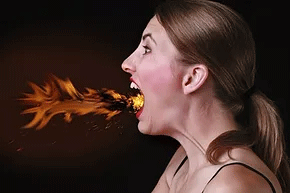
Saliva has antibacterial properties in it, but dehydration can prevent your body from making enough saliva.“If you’re not producing enough saliva in the mouth, you can get bacteria overgrowth and one of the side reactions of that is bad breath from chronic dehydration,” says John Higgins, MD, associate professor of cardiovascular medicine at the University of Texas in Houston, and chief of cardiology at Lyndon B. Johnson General Hospital.
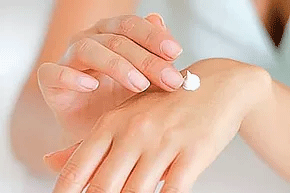
2. Dry skin.
“A lot of people think that people who get dehydrated are really sweaty; but as you go through various stages of dehydration, you become very dizzy and you don’t have enough blood volume so you get very dry skin,” Dr. Higgins says. He adds that because the skin is dry and not evaporating as well, you can also experience flushing of the skin. Think you can’t get dehydrated in cooler climates? Think again. Higgins says symptoms may be milder or come on slower, but it’s still possible to be dehydrated in cooler weather.
3. Muscle cramps.
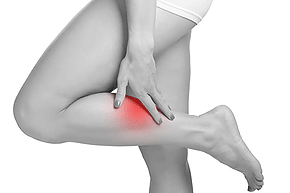
“The hotter you get, the more likely you are to get muscle cramps, and that’s from a pure heat effect on the muscles. As the muscles work harder and harder, they can seize up from the heat itself. Changes in the electrolytes, changes in the sodium and potassium can lead to muscle cramping as well,” according to Higgins.
4. Your Pee Is Extra Yellow
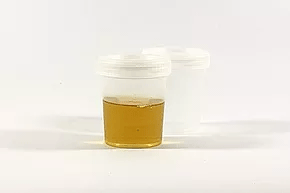 An obvious sign of dehydration is when your pee has turned a darker shade of yellow. This means your urine is over-concentrated with waste. This happens because water helps to flush out waste efficiently. When you’re fully hydrated, there’s a higher ratio of water to waste, turning it a lighter colour, and flushing out your system more effectively.
An obvious sign of dehydration is when your pee has turned a darker shade of yellow. This means your urine is over-concentrated with waste. This happens because water helps to flush out waste efficiently. When you’re fully hydrated, there’s a higher ratio of water to waste, turning it a lighter colour, and flushing out your system more effectively.
5. Headaches.
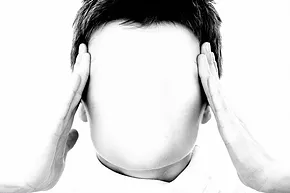 The brain sits inside a fluid sack that keeps it from bumping against the skull, explains Higgins. If that fluid sack is depleted or running low because of dehydration, the brain can push up against parts of the skull, causing headaches.
The brain sits inside a fluid sack that keeps it from bumping against the skull, explains Higgins. If that fluid sack is depleted or running low because of dehydration, the brain can push up against parts of the skull, causing headaches.
Steps for rehydration:
- By the time you feel thirsty your body is already dehydrated. So make sure you sip some quantity of water in a regular interval.
- Drink 17-20 ounces of water two to three hours before the start of exercise.
- Drink 8 ounces of fluid 20 to 30 minutes prior to exercise or during warm-up.
- Drink 7-10 ounces of fluid every 10 to 20 minutes during exercise.
- Drink an additional 8 ounces of fluid within 30 minutes after exercising.
- Drink 16-24 ounces of fluid for every pound of body weight lost after exercise.
Hydration hints:
- Rehydration occurs faster in the presence of sodium, regardless of whether this is provided in a sports.
- Some drinks that can cause dehydration include alcohol, energy drinks, and even caffeine as it has a slight diuretic effect.
- Too little or too much consumption of water may cause hyponatremia, a condition that occurs when the level of sodium in the blood is too low.


